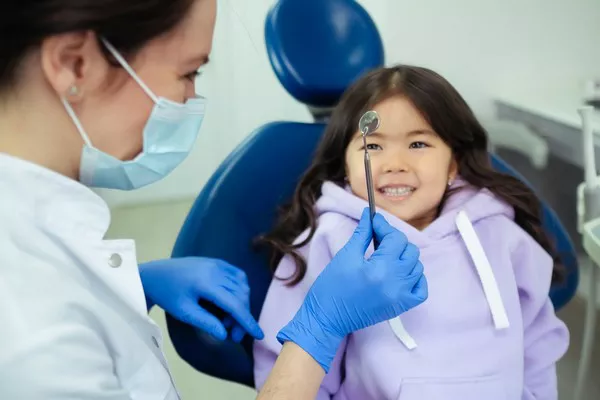Wisdom teeth removal is a common dental procedure aimed at alleviating pain and preventing oral health issues. After the extraction, proper care and management are crucial for a smooth recovery process. This article provides comprehensive insights into managing pain, diet and oral care, recovery tips, potential complications, and emphasizes the importance of following professional guidance for optimal healing.
Pain Relief
Prescription Medications
After wisdom teeth removal, dentists often prescribe pain medications to manage discomfort during the initial recovery phase. These medications may include opioids or nonsteroidal anti-inflammatory drugs (NSAIDs) to alleviate pain and reduce inflammation. It’s essential to follow the dentist’s instructions regarding dosage and frequency.
Over-the-Counter Options
In addition to prescription medications, over-the-counter pain relievers such as ibuprofen (Advil, Motrin) or acetaminophen (Tylenol) can effectively control mild to moderate pain. These medications should be taken as directed on the packaging or as advised by the dentist.
Ice Packs
To reduce swelling and alleviate pain, apply ice packs wrapped in a cloth to the outside of the face near the extraction sites. Cold therapy helps constrict blood vessels, minimize swelling, and provide relief. Use ice packs intermittently for 20 minutes on and 20 minutes off during the first 24-48 hours post-surgery.
Rest
Rest is essential for promoting healing after wisdom teeth removal. Avoid strenuous activities and limit physical exertion in the first few days following surgery. Adequate rest allows the body to divert energy toward healing and recovery.
Diet and Oral Care
Soft Foods
Immediately after surgery, consume soft foods that require minimal chewing to prevent irritation or disruption of the surgical sites. Recommended options include smoothies, yogurt, mashed potatoes, soups, and applesauce. Gradually reintroduce solid foods as tolerated.
Avoid Irritating Foods
During the initial healing phase, avoid consuming hot, spicy, or crunchy foods that can potentially irritate the extraction sites or dislodge blood clots. Opt for lukewarm or cool foods and beverages to minimize discomfort and promote healing.
Oral Hygiene
Maintain oral hygiene by gently brushing your teeth with a soft-bristled toothbrush. Avoid brushing directly over the extraction sites for the first few days to prevent irritation. Use a prescribed antimicrobial mouthwash or warm saltwater rinses (1/2 teaspoon of salt in a cup of warm water) to cleanse the mouth and aid in healing.
See Also: Is Getting Your Wisdom Teeth Removed Dangerous
Recovery Tips
Elevate Your Head
To reduce swelling, sleep with your head elevated using extra pillows or by reclining in a comfortable position. Keeping the head elevated helps minimize fluid accumulation around the extraction sites and promotes faster recovery.
Avoid Smoking and Alcohol
Smoking and alcohol consumption should be avoided during the recovery period, as they can delay healing, increase the risk of infection, and interfere with the blood clot formation needed for proper wound healing. Follow the dentist’s recommendations for refraining from these substances.
Limit Physical Activity
Engage in light activities and avoid strenuous exercises or heavy lifting for at least the first few days post-surgery. Physical exertion can increase blood pressure and blood flow to the surgical sites, potentially leading to bleeding or discomfort.
Potential Complications
Dry Socket
Dry socket is a common complication following tooth extraction, characterized by severe pain and exposed bone in the socket. It occurs when the blood clot dislodges or fails to form properly. Dentists can alleviate dry socket symptoms by cleaning the socket and applying medicated dressings to promote healing.
Infection
Signs of infection include persistent pain, swelling, fever, and foul-smelling discharge from the extraction sites. Contact your dentist immediately if you experience these symptoms, as prompt treatment with antibiotics may be necessary to prevent further complications.
Swelling
Some swelling and bruising around the cheeks and jaw are normal after wisdom teeth removal and typically subside within a few days. Use ice packs, maintain proper head elevation, and avoid vigorous rinsing to manage swelling effectively. Excessive or prolonged swelling should be evaluated by your dentist.
Bleeding
Minor bleeding after surgery is normal and can be controlled by gently biting on gauze pads placed over the extraction sites. Change the gauze as instructed by your dentist. If bleeding persists or increases, contact your dental provider for further guidance.
Conclusion
In conclusion, effective management of pain, diet, oral care, and adherence to recovery guidelines are essential for a successful recovery after getting wisdom teeth removed. Patients should follow post-operative instructions provided by their dentist diligently to minimize complications and promote optimal healing.
Consultation with a dental professional is crucial for personalized advice and treatment recommendations tailored to individual needs. By proactively addressing potential complications and maintaining good oral hygiene, patients can achieve a comfortable recovery and restore oral health promptly. Always communicate any concerns or questions with your dentist to ensure comprehensive care and support throughout the recovery process.
You Might Be Interested In






























